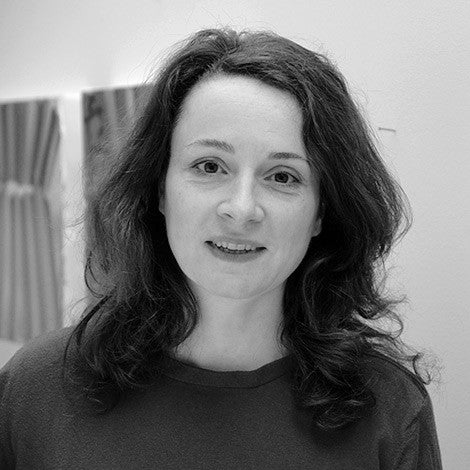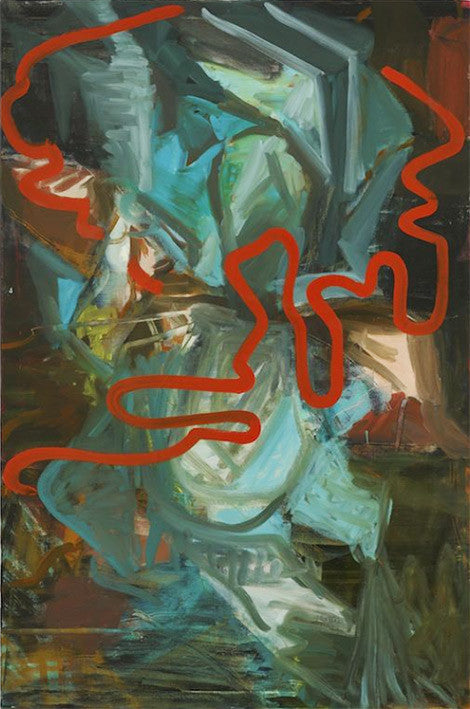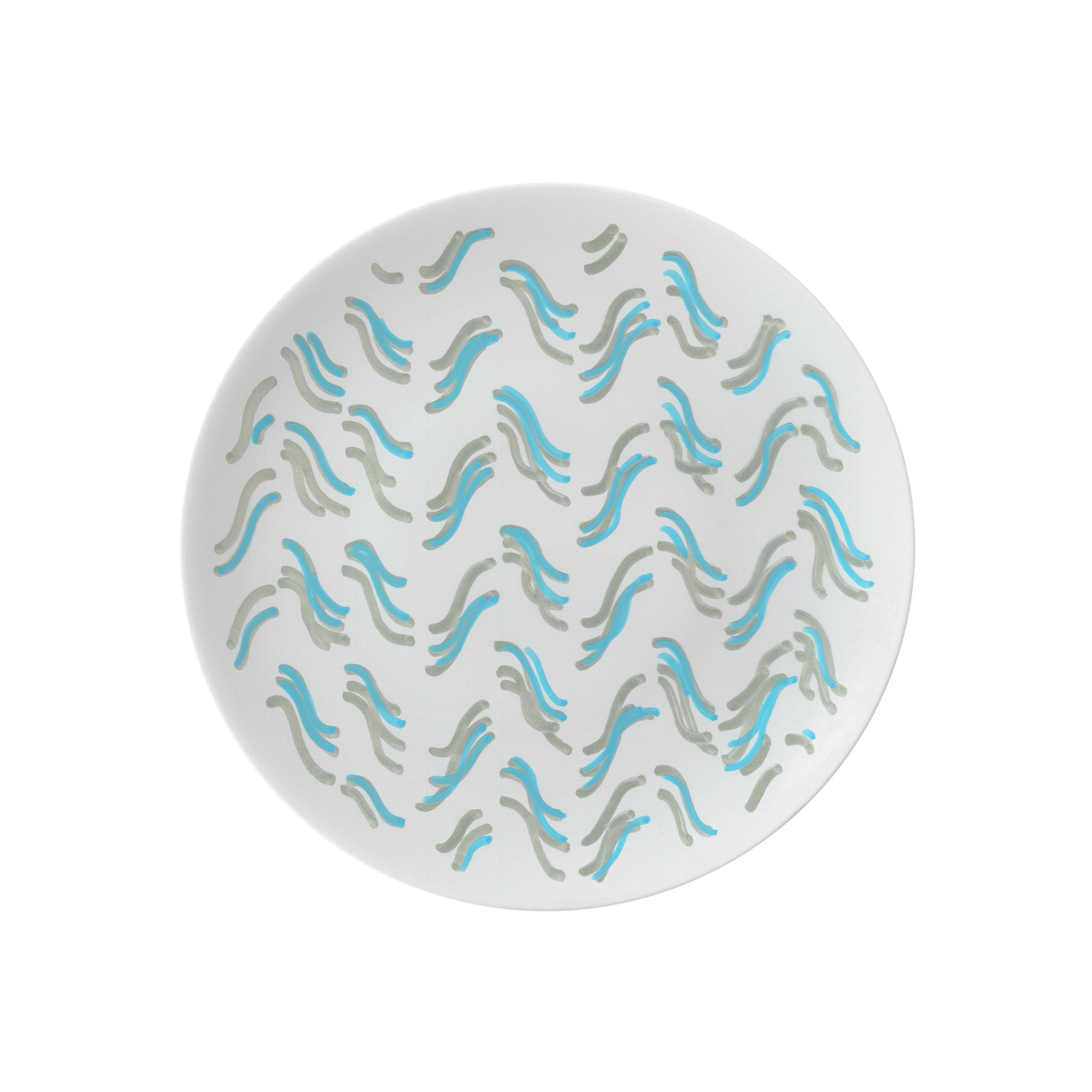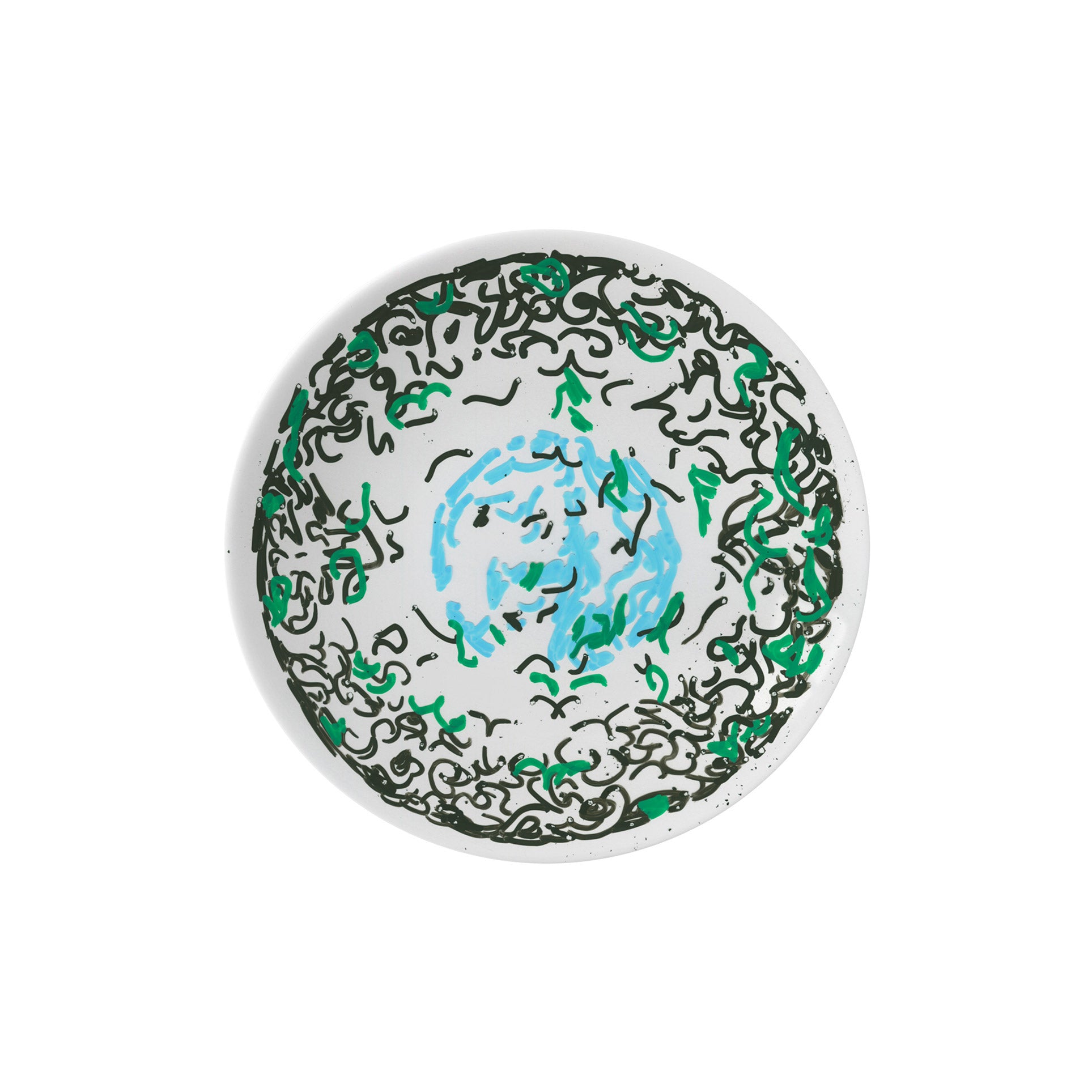Laurence Egloff
Laurence Egloff

Photo credit: Gaelle de Radigues, Berlin
Laurence Egloff for M. Legere
My series of drawings for M. Legere fit in well with my foray into different and new media. The wavy motifs covering the plates come from superimposed frameworks already present in my paintings, drawings and tapestries. I find it intriguing to work with these frameworks because they contradict the principle of figure/background and transform the image into a space with multiple perspectives which you can move within: a landscape to where your eyes wander, not a box used to present one (or more) object(s). By applying a framework, we systematically reconstruct the space. Like threads strung from point to point, the strokes drawn materialize the abstraction of distance, create a sense of grandeur and mark the various spatial levels.
The “centered” motifs designed to adorn the bowl and tapas plate are an interpretation of French tapestries from the 17th century. On the original tapestries, the figurative motif is almost completely overshadowed by the concentric ornaments that hold it. The motif is shrouded so heavily in the coils and stylised foliage that its readability becomes superfluous, hence taking away from its narrative properties. This, in turn, makes the motif change levels, reducing or indeed raising it, depending on the viewpoint, to a purely decorative function.
As an artist, my true interest lies in repetition and decline. By reworking existing images taken from both art history (Tiepolo, Botticelli, Vélasquez, Goya, Tintoretto, Michelangelo, et al.) and common figurative sources (product packaging, childhood images and family photos), my work involves an appropriation of images – a kind of encoding. Indeed, for me, it is about translating these images into my own visual language so that it materializes on canvas, paper, or tapestry. Through the repeated and almost obsessive exercise of drawing, I integrate some of these motifs without attempting to render the figurative or narrative aspect, but instead transmitting a spatial reading that I deliberately make neutral and mechanical in gesture. Since I discard their original meaning, my images come to life and integrate themselves into their new world, i.e. mine. It is, however, interesting to note that, once relieved of their narrative meaning, the images become recognizable (again) for the viewer. This means one is met with a sense of “déjà-vu”, despite being unable to name where this familiarity has come from.
Bio
Laurence Egloff, was born in Paris in 1972, graduated from Ecole des Beaux Arts in Paris in 1999, and currently lives and works in Berlin. She has had four solo exhibitions in Berlin, as well as solo exhibitions in Paris and Madrid.
Represented by

"Laurence Egloff’s paintings make concrete and immortalize an impression, something immaterial that an image made on the artist. Frequently, her points of departure are figurative paintings familiar from art history, as well as private photographs. In her further engagement with these pictures, Egloff creates a distancing gap so that the picture is reduced to the impression it made, and the emotion is extracted from the original, thus making the physical picture secondary." –Ferial Nadja Karrasch, Curator, Writer
PORCELAIN SERIES IN PRODUCTION
Plate Series
Place Setting
Cocktail Plate





